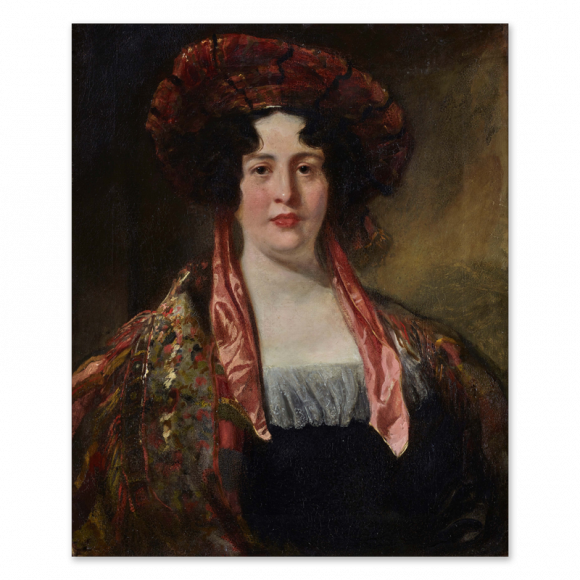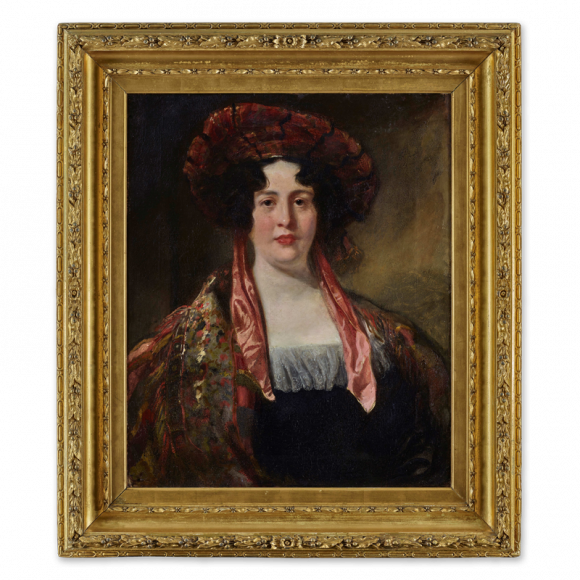19th century gilt plaster frame with label for Aitken Dott, Edinburgh
Private Collection Washington DC, USA
By descent, then gifted to the previous owner.
David Wilkie was one of the most important artists in Britain in the first half of the 19th century.Emerging onto the Scottish art scene at the very beginning of the century, Wilkie gained almost instant recognition as an artist who was breathing thoroughly original ideas into the field of art known as genre painting.Rustic genre painting had experienced something of a revival at the end of the 18th century, with artists such as George Morland, Francis Wheatley and even the redoubtable Thomas Gainsborough exploring its possibilities.But most of the pictures they produced, however skilfully executed, were tinged with a certain sentimentality or unreality.Wilkie instead looked directly back to the peasant painters of 17th century Holland and began to produce his own highly original works, showing the ordinary Scottish men and women of his acquaintance going about their very real and unexalted lives.This approach produced his famous work of 1804 – Pitlessie Fair – which put the young painter on the map.
From then on, both in his native Scotland and in London, where he settled in 1805, Wilkie’s rise to success was remarkable.He was elected an Associate of the Royal Academy in 1809 at the age of 24 and a full Academician in 1811.Wilkie soon came to the attention of the Prince Regent who began to commission work from him.After the Prince’s formal accession to the throne, he appointed Wilkie ‘The King’s Limner in Scotland’ on the death of the previous holder of the appointment, Sir Henry Raeburn, in 1823.In the last year of George IV’s reign Wilkie was appointed ‘Royal Painter in Ordinary’, with that office being confirmed by both King William IV and by Queen Victoria.




